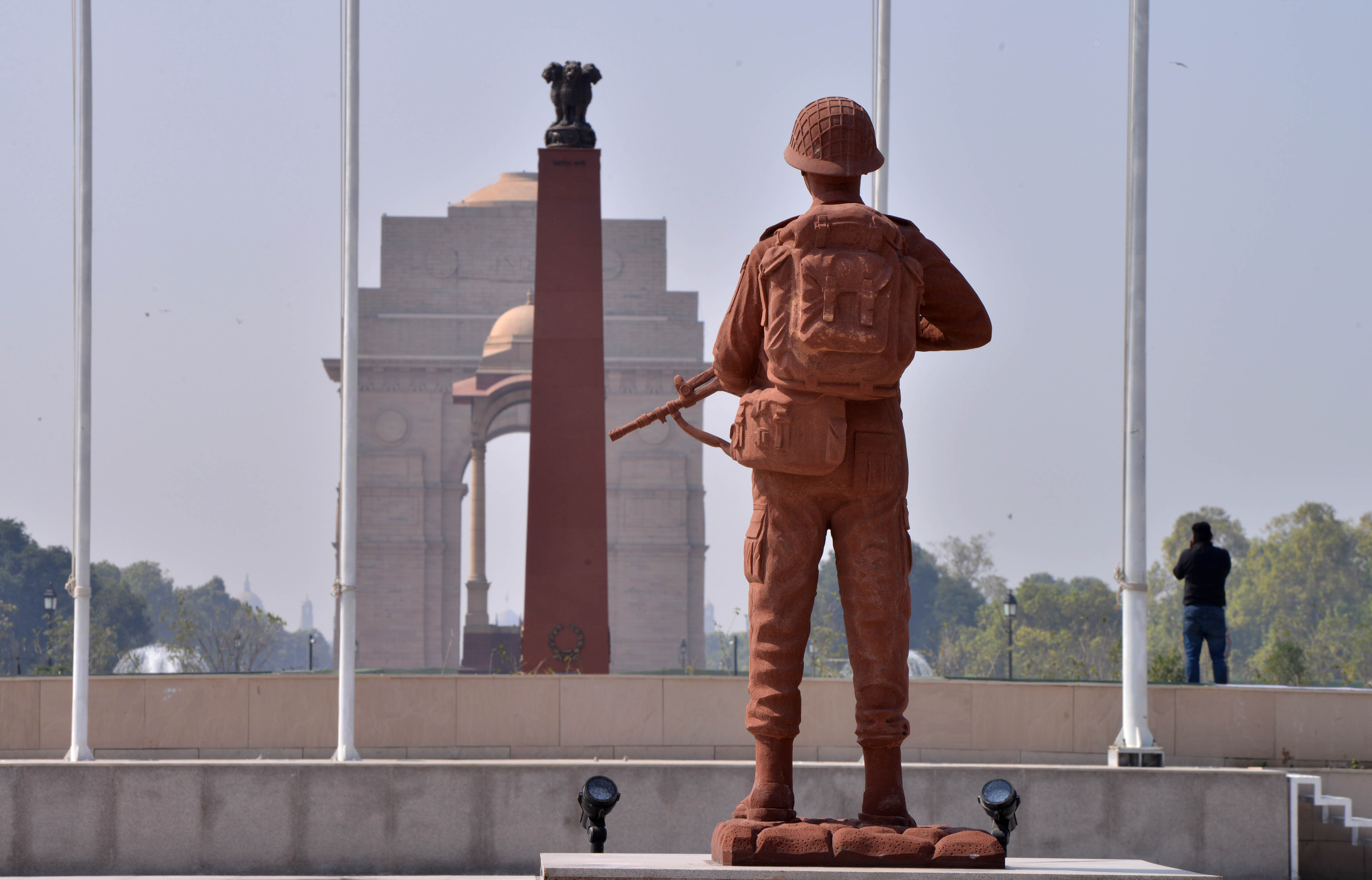'Statue of Unity' artist Ram Sutar made 6 bronze murals in National War Memorial

- Country:
- India
The six bronze murals located in the Veerta Chakra zone at the National War Memorial, depicting famous battles fought by the armed forces, were made by noted artist Ram Sutar, who had designed the 182-m 'Statue of Unity'. Dedicated to the nation on Monday by Prime Minister Narndra Modi, its design draws inspiration from the 'Chakravyuh' formation and boasts of four thematic concentric circles with a tall ceremonial obelisk at its centre bearing the eternal flame.
The Noida-based sculptor, a Padma Bhushan-recipient who attended the inauguration ceremony also made the busts of 21 awardees, 15 posthumously, of the Param Veer Chakra (PVC), country's highest wartime gallantry medal which dot the Param Yoddha Sthal built close to the main memorial on the northern side of the India Gate's C-Hexagon area. "The battles depicted in bronze relief works are -- Battles of Gangasagar, Longewala, Tithwal, Rizangla, and Operations Meghdoot and Trident," said Sutar's son Anil Sutar, who assists the sculptor in his projects.
Sutar, who turned 94 last week, said he was given the pictures depicting the battles for reference. "After the 'Statue of Unity' project, this was another project that instils a lot of pride in us. I have tried to depict the war scenes to evoke the battlefield atmosphere, using relief work. So, in the Battle of Longewala mural, a plane has been shown hovering over a tank and soldiers on the ground," Ram Sutar told PTI.
Anil said the panels, measuring 15 ft x 7 ft and the 21 busts in the sprawling Param Yoddha Sthal and the Ashokan Capital topping the 15.5-m obelisk, were all made by his father. "I have sculpted about 15 statues housed in Parliament complex, including the well-known one of Mahatma Gandhi. Besides, I also made the sitting statue of Babasaheb Ambedkar at the Ambedkar International Centre here," Ram Sutar said.
His other iconic works include a towering 70-ft statue of Mahatma Gandhi in Patna, the world's tallest statue of 'Bapu' that was unveiled in February 2013 at the Gandhi Maidan. Gandhi is seen standing affectionately with two children on either side in the bronze statue.
The layout of the National War memorial located behind the India Gate canopy and across the National Stadium consists of four concentric circles, radially outwards, namely the 'Amar Chakra' or Circle of Immortality, 'Veerta Chakra or Circle of Bravery, 'Tyag Chakra' or Circle of Sacrifice and 'Rakshak Chakra' or Circle of Protection. The Veerta Chakra zone facing the 156.5-m obelisk is housed inside the sunken area, and a flight of steps takes visitors down to it from the surface level.
Prime Minister Modi took a tour of the Param Yoddha Sthal before dedicating the memorial and also visited the gallery housing the murals. Sutar, who was commissioned to craft the artistic modellings for the majestic 'Statue of Unity' was unveiled by Modi on Sadhu Bet near the Sardar Sarovar Dam in Gujarat.
(With inputs from agencies.)
- READ MORE ON:
- Time zone
- India Time Zone
- Central Railway zone
- Body Sculptor
- Legendary Moonlight Sculptor
- Snow sculpture
- Nuclear force
- Intermolecular force
- Special forces
- News Nation
- Father of the Nation
- Z Nation
- Tata Memorial Hospital
- King Edward Memorial Hospital
- Side effect
- Community centre
- Call centre
- City centre
- Developing country
- Country music
ALSO READ
Madhya Pradesh to Honor Gond Queen with Rs 100-Crore Memorial
Global Protests and Memorials Mark Anniversary of Hamas Attack
Dueling Memorials: Unveiling the October 7th Commemoration Discourse
Memorial Park Inauguration Honoring Sikkim Soldiers
Rajnath Singh Inaugurates Prerna Sthal Memorial in Sikkim Honoring 22 Fallen Soldiers










